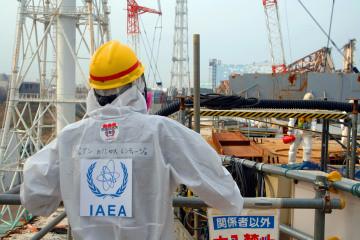by Bryan Walsh, cross posted from Time:

Honestly, if the consequences weren’t potentially so dire, the ongoing struggles to clean up the Fukushima Daiichi nuclear plant in northern Japan would be the stuff of comedy. In March, an extended blackout disabled power to a vital cooling system for days. The cause: a rat that had apparently been chewing on cables in a switchboard. As if that’s not enough, another dead rat was found in the plant’s electrical works just a few weeks ago, which led to another blackout, albeit of a less important system. The dead rats were just the latest screwups in a series of screwups by Tokyo Electric Power Co. (TEPCO), the owner of the Fukushima plant, that goes back to the day of March 11, 2011, when an earthquake and the resulting tsunami touched off a nuclear disaster that isn’t actually finished yet. I’m not sure things could be much worse if Wile E. Coyote were TEPCO’s CEO.
But it’s not funny, not really, because the consequences of the meltdown and TEPCO’s mismanagement are very real. The latest threat comes from nearby groundwater that is pouring into the damaged reactor buildings. Once the water reaches the reactor it becomes highly contaminated by radioactivity. TEPCO workers have to pump the water out of the reactor to avoid submerging important cooling system — the plant’s melted reactor cores, while less dangerous than they were in the immediate aftermath of the meltdown, still needed to be further cooled down. TEPCO can’t simply dump the irradiated groundwater into the nearby sea — the public outcry would be too great — so the company has been forced to jury-rig yet another temporary solution, building hundreds of tanks, each able to hold 112 Olympic-sized pools worth of liquid, to hold the groundwater. So TEPCO finds itself in a race: Can its workers build enough tanks and clear enough nearby space to store the irradiated water — water that keeps pouring into the reactor at the rate of some 75 gallons a minute? More than two years after the tsunami, TEPCO is still racing against time — and just barely staying ahead.
In the end, the damage from Fukushima — especially to human health — is still unlikely to be anywhere near as large as nuclear critics feared when the plant first melted down. Indeed, the greater threat to the health of those who lived around the plant may be psychological, as they struggle with the both the upheaval of evacuation and the social taint of living near a meltdown. But that assumes that the Fukushima area isn’t hit by another earthquake or tsunami before the cleanup is finally completed, likely years from now. “The Fukushima Daiichi plant remains in an unstable condition, and there is concern that we cannot prevent another accident,” Shunichi Tanaka, chairman of the Nuclear Regulation Authority, said in a news conference in early April. Not so funny after all.Read more
